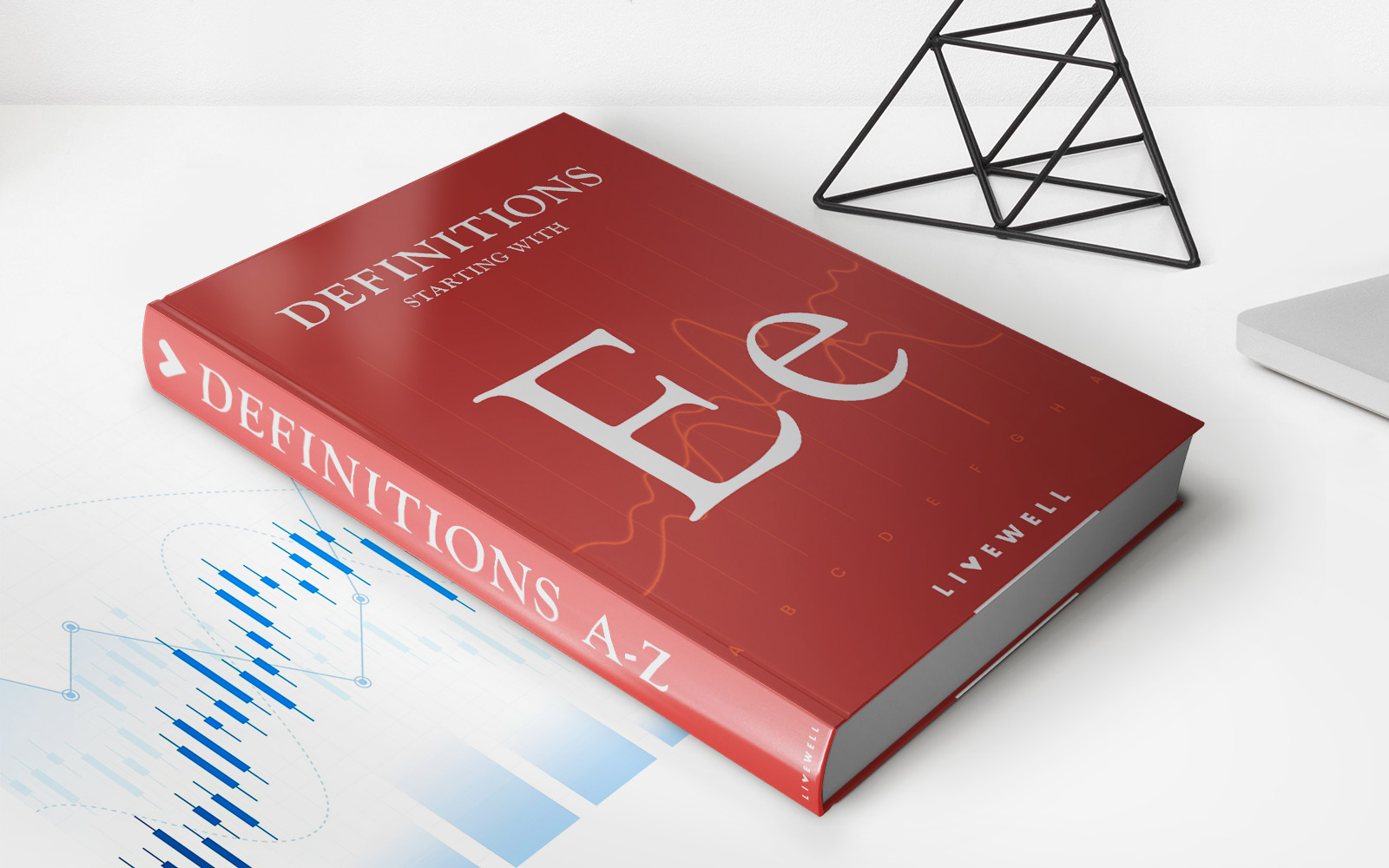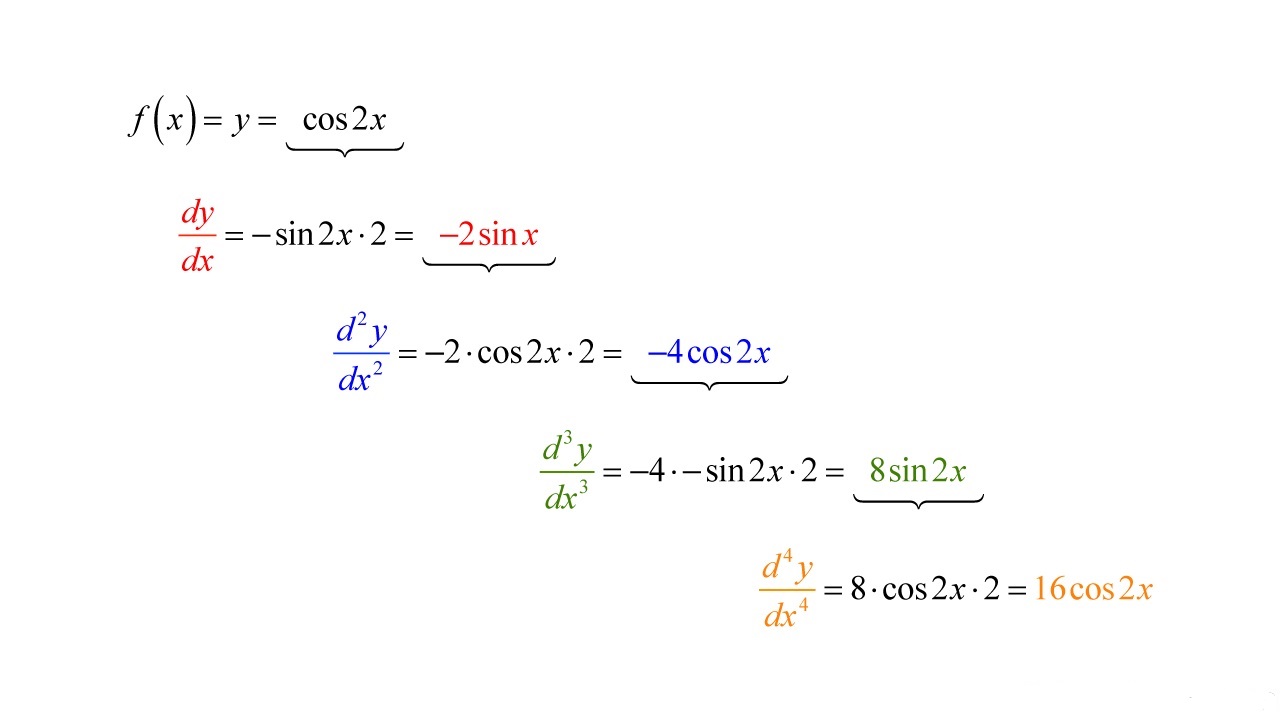Home>Finance>How Should A Firm Determine Its Appropriate Capital Structure


Finance
How Should A Firm Determine Its Appropriate Capital Structure
Modified: February 21, 2024
Discover how firms should determine their optimal capital structure and make informed finance decisions. Explore the key factors and strategies for achieving financial stability.
(Many of the links in this article redirect to a specific reviewed product. Your purchase of these products through affiliate links helps to generate commission for LiveWell, at no extra cost. Learn more)
Table of Contents
- Introduction
- Definition of Capital Structure
- Factors influencing Capital Structure decisions
- Traditional approaches to determining Capital Structure
- Modigliani-Miller theorem and its implications on Capital Structure decisions
- Trade-off theory and its implications on Capital Structure decisions
- Pecking order theory and its implications on Capital Structure decisions
- Empirical evidence on Capital Structure decisions
- Determining the appropriate Capital Structure for a firm
- Conclusion
Introduction
Capital structure is a critical aspect of financial management for any firm. It refers to the mix of debt and equity that a company uses to finance its operations and investments. Establishing an appropriate capital structure is vital for the long-term success and sustainability of a business.
When determining the optimal capital structure, a company must consider several factors, including its industry, size, growth prospects, risk tolerance, and access to financing options. The ultimate goal is to strike a balance between maximizing returns for shareholders and minimizing the cost of capital.
Various theories and approaches have been developed to guide firms in making capital structure decisions. These theories include the traditional approach, Modigliani-Miller theorem, trade-off theory, and pecking order theory. Each theory offers unique insights into the factors influencing capital structure choices.
While these theories provide theoretical frameworks, empirical evidence plays a crucial role in guiding actual capital structure decisions. By studying the outcomes of real-world firms, researchers have gained valuable insights into the determinants and effects of capital structure choices.
In this article, we will explore the concept of capital structure and its importance for firms. We will delve into the factors that influence capital structure decisions and discuss the traditional approaches as well as the theories that guide these decisions. Furthermore, we will examine the empirical evidence and shed light on how firms can determine their appropriate capital structure.
By understanding the intricacies of capital structure, firms can make informed decisions that align with their unique circumstances and strategic objectives. A well-designed capital structure can not only optimize financial performance but also enhance the firm’s overall value and competitiveness in the market.
Definition of Capital Structure
Capital structure refers to the composition of a company’s financial resources, primarily debt and equity. It represents the manner in which a firm finances its operations, investments, and growth initiatives. The capital structure decision involves determining the proportion of debt and equity that will fund a firm’s assets.
Debt capital includes funds borrowed from external sources, such as banks or bondholders, that the company must repay with interest over a specified period. Equity capital, on the other hand, represents ownership in the company and is typically raised through the issuance of common stock or retained earnings.
The capital structure of a firm can be depicted in the balance sheet, which shows the total liabilities and shareholders’ equity. A company with a higher proportion of debt in its capital structure is considered to have a more leveraged position, while a firm with more equity financing has a lower level of financial risk.
It is imperative for firms to carefully assess and determine their capital structure, as it has significant implications for the company’s profitability, risk profile, and cost of capital. A well-balanced capital structure can optimize a company’s financial performance and support its growth objectives, while an inappropriate capital structure can hinder its ability to raise funds, increase financial risks, and reduce shareholder value.
Striking the right balance between debt and equity financing is crucial, as it influences a firm’s ability to meet its obligations, invest in growth opportunities, and generate sustainable returns for its shareholders. Moreover, the capital structure decision can have implications for the firm’s ability to attract investors, access capital markets, and navigate through economic downturns.
While the overall objective is to achieve an optimal capital structure, the ideal mix can vary depending on a company’s unique circumstances. Factors such as industry dynamics, business risk, cash flow stability, regulatory environment, and growth prospects play a significant role in determining the appropriate capital structure for a firm.
It is important to note that capital structure is not a static construct and can evolve over time. As a company grows and its needs change, it may adjust its capital structure to align with its strategic objectives and market conditions. Regular evaluation and monitoring of the capital structure ensure that the firm maintains financial flexibility and adaptability in a dynamic business environment.
Factors influencing Capital Structure decisions
When making capital structure decisions, firms need to consider several key factors that can shape their financing choices. These factors vary across industries and firms, and understanding their influence is crucial for establishing an appropriate capital structure. Here are some of the key factors:
- Business Risk: The level of risk associated with a firm’s operations and industry significantly influences its capital structure decisions. High-risk industries such as technology or mining may opt for lower debt levels to minimize financial risk, while more stable industries like utilities or consumer goods may consider higher debt ratios.
- Financial Flexibility: Firms must weigh the need for financial flexibility against the cost of capital. Maintaining a lower level of debt allows companies to have more flexibility in managing their cash flows, accessing capital markets, and pursuing strategic opportunities.
- Growth Prospects: Companies with high growth prospects may require more funding for expansion and investment opportunities. They might leverage higher debt levels to finance growth initiatives, believing that the potential returns will outweigh the increased financial risk.
- Profitability: A company’s profitability and cash flow generation capacity play an essential role in determining its capital structure. Higher levels of profitability and consistent cash flows provide a stronger foundation for taking on debt and managing interest payments.
- Tax Considerations: The tax environment can influence a firm’s capital structure decisions. Interest payments on debt are tax-deductible, making debt financing more attractive from a tax perspective. This tax shield benefit encourages companies to increase their debt component.
- Cost of Capital: The cost associated with debt and equity financing is a decisive factor in capital structure decisions. A firm will strive to find the optimal mix that minimizes the cost of capital while still maintaining an acceptable level of financial risk.
- Investor Preference: The preferences and expectations of investors and shareholders can influence a company’s capital structure decisions. Some investors may have a preference for a certain level of debt or equity in a firm’s capital structure, and meeting these expectations can impact financing choices.
It is important to note that these factors are interrelated and need to be assessed holistically. The optimal capital structure for a company is one that takes into account its unique circumstances and objectives, striking a balance between risk and return. Regular evaluation and adjustment of the capital structure can help ensure alignment with changing market conditions and strategic priorities.
Traditional approaches to determining Capital Structure
In determining capital structure, firms have traditionally relied on certain approaches that provide guidelines for making financing decisions. These traditional approaches are based on the principles of risk and return, and they assist companies in finding an optimal mix of debt and equity. Here are some of the key traditional approaches:
- Net Income Theory: The net income theory suggests that firms should fund their investments with debt to maximize shareholder wealth. This theory argues that interest payments on debt are tax-deductible, resulting in a lower tax burden and higher net income available to shareholders. By increasing the debt portion of the capital structure, companies can amplify their returns on equity investment.
- Net Operating Income (NOI) Approach: The NOI approach focuses on the operating income of a firm and suggests that a company’s capital structure should be determined solely by its operating activities. According to this approach, the value of a firm is independent of its financing decisions, and a change in the capital structure will not affect the overall value of the firm.
- Modigliani-Miller (M&M) Theorem: The Modigliani-Miller theorem is a foundational theory in capital structure analysis. It states that, under certain conditions, the value of a company is unaffected by its capital structure. The theorem argues that in a world without taxes, bankruptcy costs, or information asymmetry, the value of a company is determined solely by its underlying investment opportunities, not by how these opportunities are financed.
- Pecking Order Theory: The pecking order theory suggests that companies have a preferred hierarchy of financing sources. It posits that firms prioritize internal financing through retained earnings, followed by debt financing and, as a last resort, equity financing. The theory argues that firms prefer internal funds due to the information asymmetry and adverse selection problems associated with external financing.
These traditional approaches have contributed significantly to the understanding of capital structure decisions. However, they have limitations and may not fully capture the complexities and real-world dynamics of firm financing. As a result, other theories and empirical evidence have emerged to provide a more comprehensive and nuanced understanding of capital structure determinants.
It is important for firms to consider these traditional approaches as a starting point for analysis, but also to incorporate additional factors specific to their industry, growth prospects, risk tolerance, and investor preferences. Striking the right balance between debt and equity financing is a continuous process that requires ongoing evaluation in light of changing market conditions and strategic objectives.
Modigliani-Miller theorem and its implications on Capital Structure decisions
The Modigliani-Miller theorem, developed by economists Franco Modigliani and Merton Miller in the 1950s and 1960s, is a fundamental proposition in the field of corporate finance. The theorem states that, under certain assumptions, the value of a firm is independent of its capital structure. This theorem has profound implications for capital structure decisions.
The Modigliani-Miller theorem suggests that in a world without taxes, bankruptcy costs, or information asymmetry, the way a firm chooses to finance its operations and investments (its capital structure) does not affect its overall value. This means that whether a company finances its operations with debt, equity, or a combination of both does not impact its underlying value.
This theorem challenges the traditional notion that increasing the use of debt can increase the value of a company. According to Modigliani-Miller, the value of a firm is determined by the cash flows generated by its assets and the risk associated with those cash flows, not by the way those assets are financed.
However, it is important to note that the Modigliani-Miller theorem has certain assumptions that may not hold in the real world. For example, it assumes perfect markets without any taxes or transaction costs, which is not the case in reality. In the presence of taxes, the theorem suggests that there may be an advantage to using debt financing, as interest payments are tax-deductible, reducing the tax burden.
While the exact implications of the Modigliani-Miller theorem may be debated, it highlights the importance of considering the broader factors that influence capital structure decisions, such as taxes, bankruptcy costs, and information asymmetry.
Understanding the Modigliani-Miller theorem can help firms recognize that the value of their business is primarily determined by their ability to generate cash flows from their operations and investments, rather than the specific mix of debt and equity they choose to employ. However, it is crucial for companies to account for the real-world complexities and constraints when making capital structure decisions, as factors like taxes, bankruptcy risk, and investor preferences can have tangible effects on a firm’s financing choices.
Trade-off theory and its implications on Capital Structure decisions
The trade-off theory of capital structure proposes that firms face a trade-off between the benefits and costs of debt financing. Developed by economists Myers and Majluf in 1984, this theory suggests that there is an optimal level of debt for a company that balances the tax advantages of debt with the costs and risks associated with it. The trade-off theory has significant implications for capital structure decisions.
According to the trade-off theory, debt financing offers several advantages. Firstly, interest payments on debt are tax-deductible, which reduces a company’s tax liability and increases its cash flows. Secondly, debt financing can amplify returns for shareholders by magnifying the benefit of a successful investment or project. Thirdly, taking on some level of debt can signal confidence to investors and lenders, which can enhance a firm’s ability to raise additional capital.
However, there are costs and risks associated with debt financing that firms must consider. One significant cost is the interest expense, which companies must pay regularly, increasing their fixed obligations. Additionally, excessive debt can increase the risk of financial distress, especially during economic downturns. High debt levels may limit a firm’s financial flexibility and increase its borrowing costs. Finally, information asymmetry between management and investors can lead to adverse selection and agency costs, as investors may demand higher returns to compensate for the perceived risk of opaque financial information.
The trade-off theory suggests that firms should aim to find the optimal balance between the benefits and costs of debt financing. This balance depends on several factors, including the company’s industry, growth prospects, cash flow stability, and risk tolerance. For example, companies in stable industries with predictable cash flows may have a higher debt capacity, whereas firms in volatile industries may prefer a more conservative capital structure with lower debt levels.
By applying the trade-off theory, firms can assess and determine their appropriate capital structure that maximizes value for shareholders. The theory emphasizes the importance of considering both the advantages and disadvantages of debt financing and tailoring the capital structure accordingly.
It is worth noting that the trade-off theory is not a one-size-fits-all approach. Each company will have unique circumstances and risk profiles that influence its capital structure decisions. Regular evaluation and monitoring of the trade-off between debt benefits and costs will enable companies to make informed decisions and adjust their financing mix as needed in response to internal and external factors.
Pecking order theory and its implications on Capital Structure decisions
The pecking order theory of capital structure, developed by economists Myers and Majluf in 1984, provides insights into how firms choose their sources of financing. This theory suggests that companies have a preferred hierarchy, or “pecking order,” when it comes to financing decisions, prioritizing internal financing, followed by debt, and equity as a last resort. The pecking order theory has significant implications for capital structure decisions.
According to the pecking order theory, firms prefer internal financing, such as retained earnings, as the primary source of capital. This is because internal funds do not impose direct costs on the firm, offer flexibility, and are less subject to information asymmetry issues. If internal financing is insufficient to meet investment needs, companies turn to debt financing as the next preference. Debt allows firms to leverage their existing assets and future cash flows to access external funds. Lastly, if internal funds and debt are inadequate or unavailable, equity financing, such as issuing new shares, becomes an option of last resort.
The pecking order theory is based on the premise that firms face information asymmetry issues, where insiders (managers) have more information about the company’s prospects than external investors. This asymmetry makes it difficult for firms to signal their true value to outside investors, resulting in adverse selection problems when seeking external financing. As a result, firms often opt for internal financing or debt, which are less reliant on external investors’ perception of firm value.
This theory has implications for capital structure decisions because it suggests that financing choices are driven by a firm’s need for funds rather than a deliberate pursuit of an optimal capital structure. Firms prioritize financing options that minimize information asymmetry costs and adverse selection problems. As a result, the capital structure is shaped by the internally generated funds, followed by the most preferred external financing option—debt—before resorting to equity.
Understanding the pecking order theory enables firms to make informed capital structure decisions. It highlights the importance of having a reliable internal financing base and utilizing debt when necessary before considering equity financing. By following this pecking order, firms can minimize information asymmetry costs, maintain financial flexibility, and make financing decisions consistent with their growth objectives and risk tolerance.
However, it is important to note that the applicability of the pecking order theory may vary across industries and firms. Some companies may have a greater reliance on external financing, while others may have significant internal funds available. Each firm should carefully evaluate its own circumstances, financial position, and growth prospects to determine the optimal capital structure that aligns with its specific needs and objectives.
Empirical evidence on Capital Structure decisions
Empirical studies have played a significant role in shaping our understanding of capital structure decisions. Researchers have examined the financing choices of companies across different industries and countries to identify patterns and determine the factors that influence capital structure decisions. The empirical evidence provides valuable insights into the real-world implications of various theories and approaches. Here are some key findings from empirical studies:
Pecking Order Theory: Empirical studies generally support the pecking order theory, showing that firms prioritize internal financing over debt and equity. Research suggests that companies rely heavily on internal funds, such as retained earnings, to finance their operations and growth. When external financing is necessary, debt issuance is preferred due to its lower information asymmetry costs compared to equity issuance.
Trade-off Theory: Empirical evidence supports the trade-off theory by indicating that firms consider the trade-off between debt benefits and costs in their capital structure decisions. Studies have shown that companies with higher profitability, larger size, and stable cash flows tend to have higher debt ratios. Additionally, tax advantages associated with debt are found to influence capital structure choices.
Growth Opportunities: Empirical research suggests that firms with greater growth opportunities tend to have lower debt levels. This is because companies with high growth prospects typically require more financial flexibility to invest in new projects and opportunities. As a result, they may prefer to rely more on equity financing to avoid financial distress and maintain flexibility.
Industry Effects: Some empirical studies demonstrate that industry characteristics play a role in capital structure decisions. For example, firms in industries with high capital intensity, such as manufacturing or utilities, tend to have higher debt levels, as they rely on debt to finance their fixed assets. Service-oriented industries, on the other hand, may have lower debt ratios due to their intangible assets and lower capital requirements.
Market Timing: Empirical evidence suggests that firms may time their financing decisions based on market conditions. During favorable market conditions, companies may issue more equity to take advantage of higher stock prices, while in downturns, they may opt for debt financing. This behavior indicates that firms consider external market factors and timing when making capital structure decisions.
Overall, empirical research provides valuable insights into the factors influencing capital structure decisions and helps guide firms in making informed financing choices. However, it is important to recognize that the optimal capital structure varies across industries, firm-specific circumstances, and market conditions. Therefore, companies should combine empirical evidence with theoretical frameworks and consider their unique situations when determining their appropriate capital structure.
Determining the appropriate Capital Structure for a firm
Determining the appropriate capital structure for a firm is a complex and multifaceted task. It involves considering various factors, assessing risk and return trade-offs, and aligning the capital structure with the firm’s strategic objectives and financial capabilities. While there is no one-size-fits-all solution, there are several key steps that companies can follow to determine their optimal capital structure:
- Evaluate Business and Financial Risks: Assess the industry dynamics, competitive landscape, and business risks that the company faces. Evaluate the company’s financial risks, including cash flow stability, sensitivity to economic cycles, and risks associated with debt financing.
- Analyze Financial Performance: Evaluate the company’s financial performance, including profitability, liquidity, and leverage ratios. Analyze the cash flow generation capacity and the ability to service debt obligations.
- Consider Growth Opportunities: Evaluate the company’s growth prospects and investment opportunities. Determine the funding requirements to pursue these opportunities and assess the impact on the capital structure.
- Assess Risk Tolerance: Consider the risk tolerance and preferences of the company’s management and shareholders. Different stakeholders may have varying levels of tolerance for financial risks and debt obligations.
- Weigh Cost of Capital: Evaluate the cost of capital associated with different financing options, including the cost of debt and equity. Consider the impact of taxes, interest rates, and market conditions on the cost of capital.
- Take Investor Preferences into Account: Consider the preferences and expectations of investors and lenders when determining the capital structure. This includes understanding the existing shareholder base and the level of acceptance for debt financing.
- Balance Flexibility and Stability: Strive to strike a balance between financial flexibility and stability. Assess the firm’s need for financial flexibility to seize growth opportunities and manage risks, while also considering the stability and predictability of cash flows.
- Continuously Monitor and Adjust: Regularly monitor the company’s financial performance and market conditions. Adjust the capital structure as needed to reflect changing circumstances, such as industry trends, regulatory changes, or shifts in risk appetite.
It is crucial for firms to take a holistic approach when determining their appropriate capital structure. This involves considering both internal and external factors, understanding the company’s risk profile, and finding the right balance between debt and equity financing. While theories and empirical evidence provide useful guidelines, companies should adapt these insights to their specific circumstances and strategic goals.
Determining the appropriate capital structure is an ongoing process that requires regular evaluation, periodic reassessment, and adjustment as the company evolves. It is important to involve financial experts, such as CFOs and financial advisors, to provide insights and guidance throughout the capital structure decision-making process.
Conclusion
Establishing an appropriate capital structure is a crucial decision for any firm. The capital structure, which represents the mix of debt and equity financing, significantly impacts a company’s financial performance, risk profile, and cost of capital. While determining the optimal capital structure is a complex task, there are several theories, empirical evidence, and key factors that guide firms in making informed financing choices.
The traditional approaches, such as the net income theory, net operating income approach, and Modigliani-Miller theorem, provide theoretical frameworks for understanding capital structure decisions. The trade-off theory emphasizes the balance between the benefits and costs of debt financing, while the pecking order theory emphasizes the prioritization of internal funds over external financing.
Empirical evidence has further enriched our understanding of capital structure decisions. Studies have identified factors such as profitability, industry characteristics, growth opportunities, and investor preferences that influence firms’ financing choices. By considering these factors and aligning the capital structure with strategic objectives, firms can optimize their financial performance and risk management.
Determining the appropriate capital structure requires a comprehensive evaluation of business risks, financial performance, growth prospects, risk tolerance, and cost of capital. It is important to strike a balance between financial stability and flexibility, considering the preferences and expectations of investors and lenders. Regular monitoring and adjustment of the capital structure ensure adaptability to changing market conditions and industry dynamics.
Ultimately, the appropriate capital structure for a firm is unique to its specific circumstances and strategic goals. By combining theoretical frameworks, empirical evidence, and a deep understanding of the company’s financial position, firms can make informed financing decisions that align with their growth objectives, risk appetite, and value creation for shareholders.
In summary, the determination of the appropriate capital structure is an ongoing process that should be approached with careful consideration of various factors. By striking the right balance between debt and equity financing and adapting to changing circumstances, firms can optimize their capital structure to support long-term growth and financial success.














